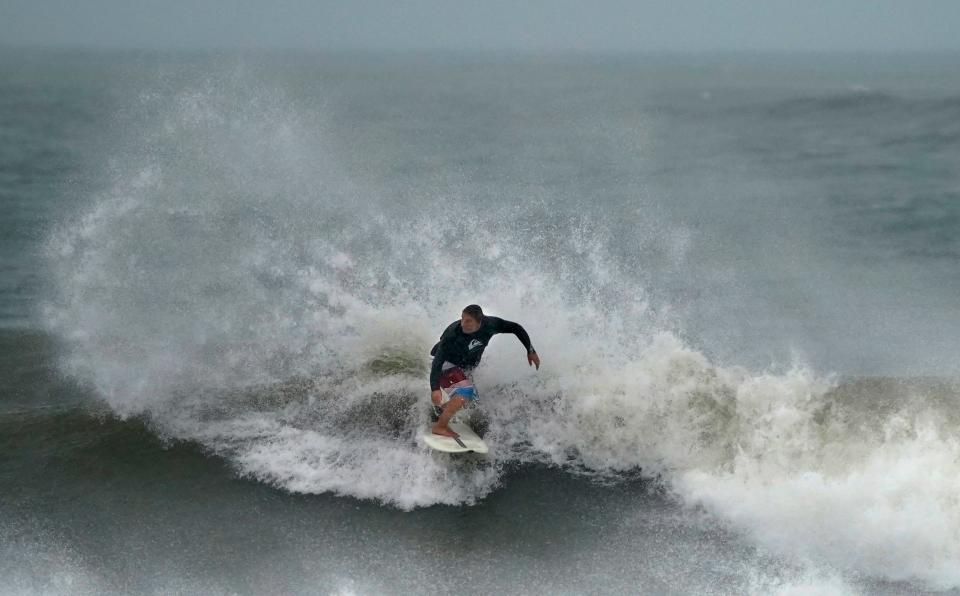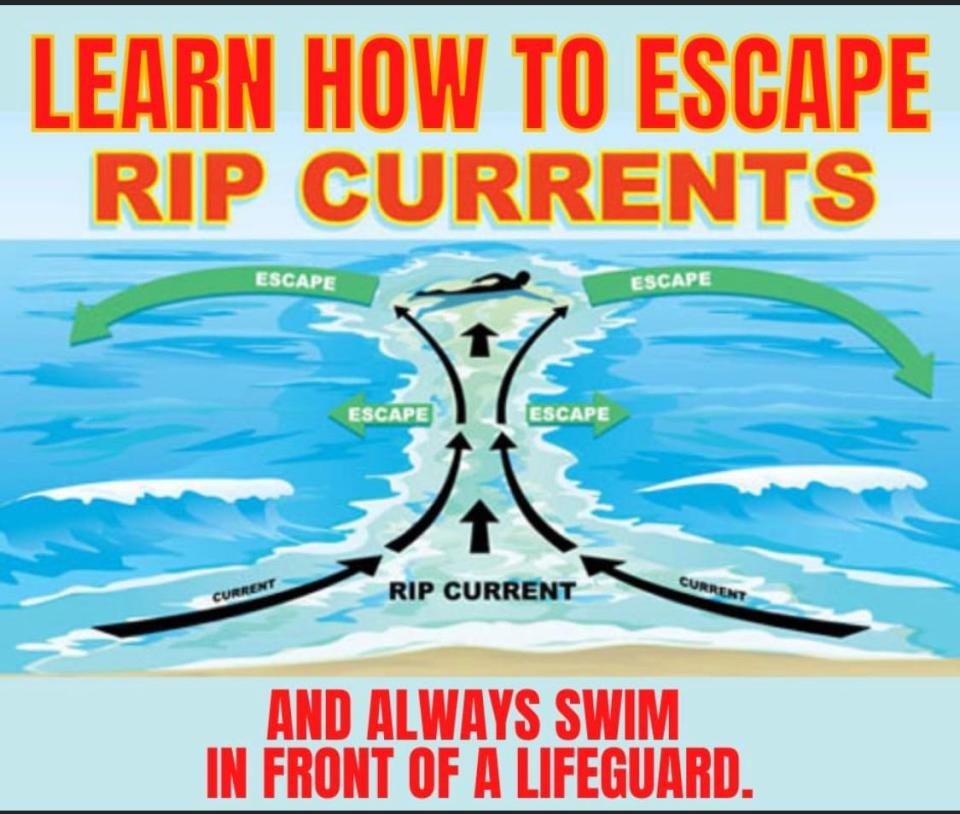Headed to the beach this weekend? Look out for dangerous rip currents in Volusia, Flagler
Although Hurricane Lee thankfully doesn’t threaten Florida’s Atlantic Coast with a direct impact, the storm is still generating rough surf and a risk of dangerous rip currents this week on the beaches in Volusia and Flagler counties.
The rip current risk extends through the weekend according to advisories issued by both counties, as well as the National Weather Service in Melbourne. Beachgoers are advised to exercise extreme caution when swimming in the ocean due to the potential threat of rip currents.

Here’s the weekend beach outlook.
National Weather Service: Waves of 6-8 feet expected
A high surf advisory was issued for the central Florida Atlantic coast on Thursday morning by the National Weather Service in Melbourne. The advisory, which includes Volusia and Flagler beaches, extends through 11 a.m. Friday.
In addition, a high risk of numerous life-threatening rip currents continues at all central Florida Atlantic beaches. The high risk of life-threatening rip currents will continue through this weekend and well into next week, according to forecasters.
According to the advisory, breaking waves will build to between 6 and 8 feet north of Sebastian Inlet and 4-7 feet to the south by Thursday afternoon. Entering the ocean remains strongly discouraged. Beachgoers are advised to heed all warnings from beach patrol.
The height of the waves is expected to subside heading into the weekend, with swells expected to reach 4-5 feet by early Saturday and roughly 4 feet by Sunday, said Robert Haley, meteorologist at the National Weather Service in Melbourne.
Even so, the rip current risk will still be high throughout the weekend, he said.
“The important thing to know is that even though the swells subside, surf conditions remain very dangerous,” Haley said. “There are expected to be numerous strong rip currents and the surf itself will still be very rough and potentially dangerous.”
More: What is a rip current? How to stay safe in the ocean when risks are high
In Volusia County, strong rip currents, high surf expected
Volusia County Beach Safety Ocean Rescue is flying the red flag through Monday and encouraging beachgoers to exercise extreme caution when swimming in the ocean due to strong rip currents and high surf related to Hurricane Lee, according to a Thursday news release.
“While the ocean and waves may look calm, many swimming hazards are not readily apparent and can easily and quickly catch swimmers off guard,” the release stated. “Individuals planning to visit the beach during this time should take proactive measures to stay safe, remain alert, and know their own swimming capabilities and limitations when enjoying the ocean.
If you're going to the beach, follow these guidelines:
If you do swim in the ocean, swim in front of a staffed lifeguard tower and remain in waist deep water where you can firmly grasp the bottom at all times.
Pay close attention to posted warnings or flags.
Keep a close eye on children and inexperienced swimmers.
Follow lifeguard instructions at all times.
For more information about beach safety, download the Volusia Beaches mobile app, or call 386-239-7873.
In Flagler County, dangerous rip currents also expected
Flagler County Emergency Management has posted daily updates on its Facebook page this week advising beachgoers of the risk of dangerous currents expected to extend at least through Saturday.
“Marine conditions are expected to deteriorate this week with large breakers developing,” said Emergency Management Director Jonathan Lord in a statement posted online. “The surf will build to about 5 or 7 feet through at least Saturday. These large breakers could potentially cause some beach and dune erosion and will continue the high risk for rip-current conditions that we are currently seeing.”
If you get caught in a rip current

Those who enter the ocean and find themselves caught in a rip current should follow the National Weather Service recommendations:
Relax, rip currents don’t pull you under.
Don’t swim against the current.
You may be able to escape by swimming out of the current in a direction following the shoreline, or toward breaking waves, then at an angle toward the beach.
You may be able to escape by floating or treading water if the current circulates back toward shore.
If you feel you will be unable to reach shore, draw attention to yourself. If you need help, yell and wave for assistance.
This article originally appeared on The Daytona Beach News-Journal: Rip current risk is high this weekend on Volusia-Flagler beaches

